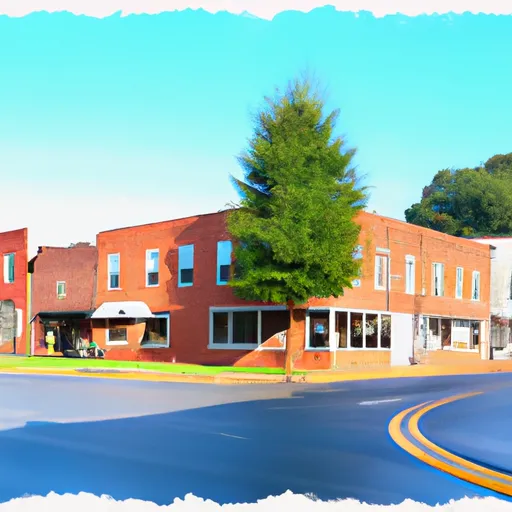-
 Snoflo Premium
Snoflo Premium
Get unlimited access to all our content
With no Ad interruptions! - Start Your Free Trial Login with existing account
Mercer
Eden Index
Climate
7.7
•
Recreation
2.2
•
Community
•
Safeguard
3.8/10

Mercer is a small rural community located in the southwestern part of Tennessee, known for its pleasant climate and abundant outdoor recreation opportunities. The region experiences a humid subtropical climate, characterized by hot and humid summers, mild winters, and moderate rainfall throughout the year.
Situated near the Tennessee River, Mercer benefits from its hydrological constituents. The river provides opportunities for water-based activities like fishing, boating, and kayaking. Additionally, the surrounding area is dotted with numerous lakes and streams, offering serene settings for picnicking, swimming, and camping.
Outdoor enthusiasts will find a variety of recreational opportunities in Mercer. The nearby Natchez Trace State Park is a popular destination for hiking, horseback riding, and wildlife watching. The park also boasts several well-maintained campgrounds, allowing visitors to immerse themselves in nature for extended periods.
For those interested in history, the Shiloh National Military Park is within driving distance. This significant Civil War site offers guided tours, interpretive exhibits, and the chance to explore historic battlefields.
In summary, Mercer, Tennessee, offers a pleasant climate, hydrological advantages, and a range of outdoor recreation opportunities, making it an ideal destination for nature lovers and history enthusiasts alike.
What is the Eden Index?
The Snoflo Eden Index serves as a comprehensive rating system for regions, evaluating their desirability through a holistic assessment of climate health, outdoor recreation opportunities, and natural disaster risk, acknowledging the profound impact of these factors on livability and well-being.
Climate Health Indicator (CHI): 7.7
Mercer receives approximately
1373mm of rain per year,
with humidity levels near 89%
and air temperatures averaging around
16°C.
Mercer has a plant hardyness factor of
7, meaning
plants and agriculture in this region tend to thrive during the non-winter months.
By considering the ideal temperature range, reliable water supplies, clean air, and stable seasonal rain or snowpacks, the Climate Health Indicator (CHI) underscores the significance of a healthy climate as the foundation for quality living.
A healthy climate is paramount for ensuring a high quality of life and livability in a region, fostering both physical well-being and environmental harmony. This can be characterized by ideal temperatures, reliable access to water supplies, clean air, and consistent seasonal rain or snowpacks.
Weather Forecast
Streamflow Conditions
Hatchie-Obion
Area Rivers
Hatchie-Obion
Snowpack Depths
Hatchie-Obion
Reservoir Storage Capacity
Hatchie-Obion
Groundwater Levels
Recreational Opportunity Index (ROI): 2.2
The Recreational Opportunity Index (ROI) recognizes the value of outdoor recreational options, such as parks, hiking trails, camping sites, and fishing spots, while acknowledging that climate plays a pivotal role in ensuring the comfort and consistency of these experiences.
Access to outdoor recreational opportunities, encompassing activities such as parks, hiking, camping, and fishing, is crucial for overall well-being, and the climate plays a pivotal role in enabling and enhancing these experiences, ensuring that individuals can engage in nature-based activities comfortably and consistently.
Camping Areas
| Campground | Campsites | Reservations | Toilets | Showers | Elevation |
|---|---|---|---|---|---|
| Cypress Creek Landing | 17 | 103 ft | |||
| Flint Creek Waterpark | 156 | 246 ft | |||
| Shields RV Military - Gulfport NCB | None | 26 ft | |||
| Fairley Bridge Landing | 6 | 88 ft | |||
| Moodys Landing | 7 | 135 ft | |||
| Gulf Marine State Park | None | 6 ft | |||
| Big Biloxi Rec Area | 31 | 50 ft | |||
| Keesler AFB Military | 52 | 22 ft | |||
| Janice Rec.Area | 7 | 116 ft | |||
| Airey Lake | None | 170 ft |
Nearby Ski Areas
Catastrophe Safeguard Index (CSI):
The Catastrophe Safeguard Index (CSI) recognizes that natural disaster risk, encompassing floods, fires, hurricanes, and tornadoes, can drastically affect safety and the overall appeal of an area.
The level of natural disaster risk in a region significantly affects safety and the overall livability, with climate change amplifying these risks by potentially increasing the frequency and intensity of events like floods, fires, hurricanes, and tornadoes, thereby posing substantial challenges to community resilience and well-being.
Community Resilience Indicator (CRI):
The Community Resilience Indicator (CRI) recognizes that education, healthcare, and socioeconomics are crucial to the well-being of a region. The CRI acknowledges the profound impact of these elements on residents' overall quality of life. By evaluating educational resources, healthcare accessibility, and economic inclusivity, the index captures the essential aspects that contribute to a thriving community, fostering resident satisfaction, equity, and social cohesion.

